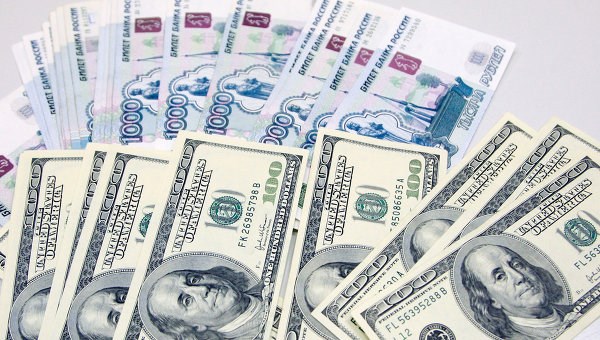Russia’s real foreign debt five times higher than official figure
The Russian government’s nominally low foreign debt of $50 billion, at 3.6% of the GDP, is only the tip of the iceberg with respect to the government’s lending to western creditors, finanz.ru reports.
If one takes into account the loans of the state banks and the state corporations and structures which are more than 50% owned by the government, the total foreign debt of the government sector exceeds the official figure by a factor of five, at $255 billion.
These were the figures cited by the Russian Presidential Academy of National Economy and Public Administration (RANEPA) in the September edition of the “Monitoring the Economic Situation” report.
Government debt in the expanded sense which includes government-controlled companies accounts for nearly half of all the Russian economy’s foreign debt ($520 billion).
State banks account for 69% of the banking sector’s foreign debt at $72 billion, current accounts and deposits accounting for 90% of this figure.
State corporations in the non-financial sector have borrowed $107 billion, which equates to nearly a third of the country’s corporate debt to foreign creditors ($338 billion).
“Despite the nominally insignificant government foreign debt, the debt of companies for which the government’s share exceeds 50% of the capital constitutes a significant amount,” states Pavel Trunin, director of RANEPA’s Center for the Study of Central Bank Issues. He adds that “this debt structure must be taken into account when analyzing the stability of the government debt policy”.
The state sector’s debt in the expanded sense is equal to 55% of Russia’s international reserves ($460 billion) and two thirds of this amount, if only its foreign currency portion is taken into account ($373 billion).
Of the total foreign debt, roughly 17% ($89 billion) is short-term, needing to be repaid or refinanced in the next year. Another $51 billion must be repaid in the next two years, and $28 billion has “on demand” status.
The significant proportion of short-term debt is risky. Interest payments and debt repayment consume 32% of all the Russian economy’s foreign currency income.
According to the International Monetary Fund’s methodology, this implies “quite a high risk level”, RANEPA states.
At the same time, the ratio of foreign debt to the GDP (32%) and to the export of goods and services (120%) taking into account the IMF’s threshold values “indicates intermediate level risk”.
Since 2014, Russia’s foreign debt has shrunk by $200 billion, and the stagnation of foreign investments in recent years is an “unfavorable signal”, Trunin notes.
This “is evidence both of non-residents’ reluctance to finance Russian companies under conditions of slow economic growth and growing geopolitical risks, and of the absence of new profitable projects which Russian economic agents would be willing to borrow from abroad to invest in,” the expert explains.
